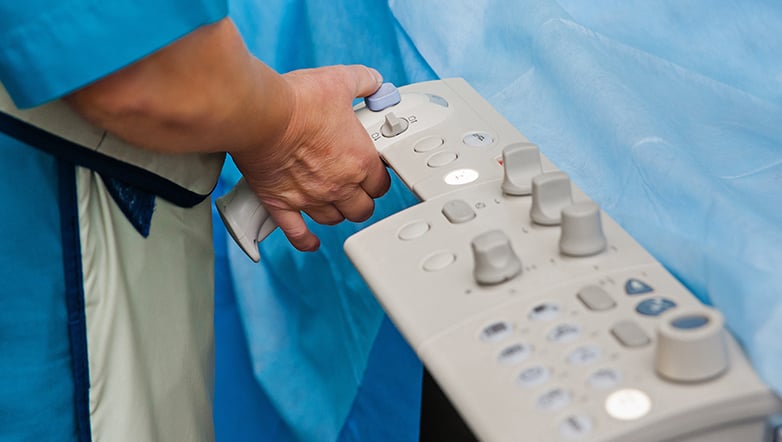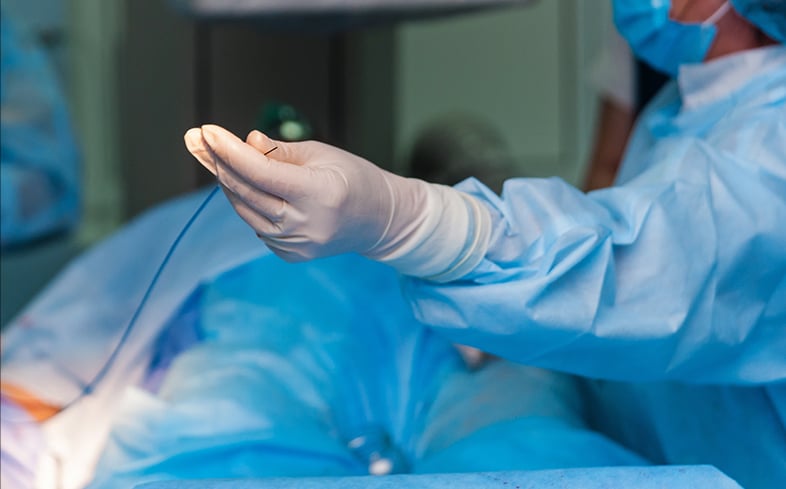During your consultation, you may be recommended for advanced imaging and possible intervention at one of our catheterization labs. Here, we’ll tell you everything you need to know about the different ways we examine and treat our patients.
Imaging
- A venogram is an outpatient procedure performed under light anesthesia to capture an image of the blood vessels. Because the veins are not normally visible by x-ray, a special dye and camera are used to highlight the vessels.
- The physician will insert a catheter in the upper thigh and guide it through the vessel all the way to the area of interest. Once in position, a special dye is injected. As the dye passes through the vein, an x-ray is taken to track the flow of blood.
- If the patient has an allergy to our dye or has poor kidney function, we can utilize carbon dioxide instead.
Intravascular Ultrasound (IVUS)
- IVUS is considered the “gold standard” in confirming the presence of disease in the vasculature.
- A small ultrasound device is attached to a catheter and guided through the femoral vein (in the groin area) to the area(s) of concern.

Procedures/Treatments
Chemical Embolization
- Embolization is one option for treatment of symptomatic Pelvic Congestion Syndrome. It is a minimally invasive procedure to close the damaged pelvic veins and restore healthy blood flow.
- Venoplasty refers to a technique used to open blocked veins by inflation of a balloon catheter. This technique is typically used in conjunction with stenting although not always. The balloon is removed after it is used.
- A stent is used to open a vessel and improve blood flow. The vascular specialist will insert a cylindrical metal wire mesh tube into the vein in order to keep the blood flow channel open.
- The Center for Vascular Medicine in Silver Spring MD utilizes the BD-Bard Venovo Stent, an FDA approved venous stent.

